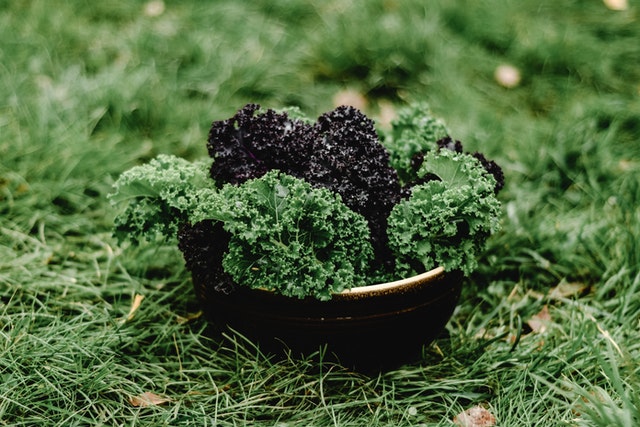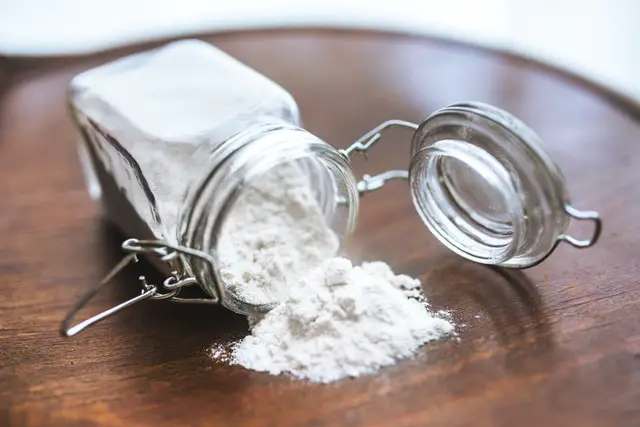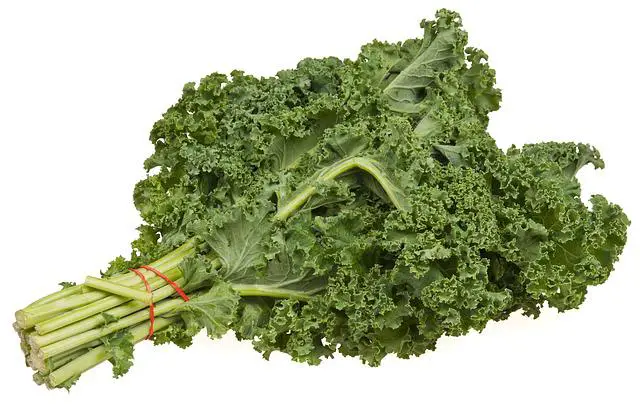One of the healthiest greens you can add on your plate is kale, which is also delicious and adaptable. If you have noticed black spots on kale, you may be wondering if that makes the plant unsafe to eat. If you’re growing the kale at home, you might also be wondering what you need to do to restore your plant to health.
Unfortunately, kale and many other vegetables are prone to getting black spots on their leaves, and this is often called black spot disease, even though it may refer to more than one kind of disease.
Black Spots On Kale

If you’re growing kale in your garden, you might be concerned and disappointed when you check on the plant and discover that the leaves have black spots on them. It’s important not to eat food if you think it’s unsafe, but you don’t want to dig up and throw away your kale plants without checking.
On the whole, black spots on kale are not a serious cause for concern, as they can usually be dealt with fairly easily, and a few will not hurt you. However, it is important to address them, because if you ignore the spots and they get worse, your kale will not taste very good.
You should therefore make sure you treat any kale plants that are developing black spots. There are a few options for this, including:
- Neem oil
- Fungicide
- Baking soda spray
- Cutting off infected foliage
You should also look for ways to minimize infections, which can be done by rotating your crops, choosing healthy seeds, and spacing your plants out so that air can flow between them. Let’s take a look at the treatment solutions below.
1) Neem Oil
It’s a good idea to take a closer look and see if you can determine what’s causing the black spots before you start treating them, but if you aren’t sure, neem oil can be a good starting point, especially if you think that pests are eating the kale and causing the damage.
Things like aphids love kale, and they may cause foliage damage by constantly chewing at the leaves, tearing the tissues and breaking them apart. If this happens, spraying or wiping the kale plant down with neem oil may be a suitable way to minimize leaf damage.
Neem oil is a good option for outdoor plants, because it is unlikely to harm beneficial insects. It will kill a variety of pest species, and may help your kale to recover.
2) Fungicide
Fungi are often responsible for black spots on kale, and if you think your plant has a fungal infection, you might want to use a fungicide. According to HomeGardenVeg, black spots are frequently the result of a fungus called Alternaria Brassicae, and they will spread across the plant if not treated.
There are a few all-purpose fungicides that you can apply to your plants if you choose to. Make sure you select one that is safe for human consumption so that you can eat the kale when it is ready. You should also make efforts to minimize damp, warm conditions if you can, as this will make it harder for the fungus to spread.
3) Baking Soda Spray

Some people find that a baking soda spray helps to prevent black spots from spreading across their kale leaves, and this is another all-natural solution that you may want to try in your garden. It is also safe for human consumption, which is a big bonus.
To try this, mix together a tablespoon of baking soda, a gallon of water, 2 tablespoons of vegetable oil, and a tablespoon of dish detergent. Next, spray a small, test amount on some of the plant’s leaves and wait for 24 hours to see how the kale responds. If the foliage does not wilt or show signs of damage, it should be safe to spray the rest of the plant.
The dish detergent will help to take care of any insects that are infecting the kale as an additional bonus, and this is worth considering if you’re dealing with aphids or other pests.
4) Cutting Off Infected Foliage
Sometimes, the best solution involves getting rid of heavily diseased leaves to make space for new ones. This is a particularly good idea if the problem spread badly before you noticed it. You should use other methods too, however, or there is a risk that the spots will simply spread to any new foliage that the kale produces.
You can use clean, sterile shears to remove any leaves that seem to be particularly heavily spotted. Do not touch these against healthy parts of the plant, because both bacterial and fungal infections can spread as a result of the contact.
Burn old foliage, as putting it on your compost heap could transfer the problem to the compost, and later cause issues with other plants.
See another post: Are Mango Trees Evergreen?
Summary
Black spots on kale are annoying, especially if you have grown the kale yourself and you were preparing to harvest and enjoy it. Unfortunately, they are a relatively common issue with brassicas, and can be caused by several different things.
If your kale is developing black spots on its foliage, try the above solutions to solve the issue. If the spots continue, you may need to remove the plants and replace them.
Frequently Asked Questions
Is kale with black spots safe to eat?
In general, kale with a few black spots should be safe to eat. This is because the bacteria and fungi that often damage the kale’s tissues are not harmful to humans. They feed on plant matter, not human cells, and therefore it should not hurt you to consume them.
However, you may find that the kale doesn’t taste very good. According to DavidsGiantVegetables, these dead cells often lack flavor. They may also lack nutrients, since the insects have already stripped the goodness out of them. However, they won’t hurt you, and you can eat kale with black spots safely.
Can I eat vegetables with black spots?
Most vegetables with black spots can be safely eaten, for the same reason as described above. Whatever attacked the plant tissue has not evolved to attack animal tissue, and therefore it is very unlikely to hurt you when you consume it.
However, you should always check that the spots are not spots of mold, as this could be harmful.
You can cut off areas with lots of black spots if you prefer, and this may make your meal more enjoyable, because you won’t have bits of tasteless plant tissue in the dish. However, it should generally be perfectly safe to eat vegetables with black spots.
What are the spots on my kale?
There are a few possible causes of spots, but in general, they are the result of attacks by either fungus or bacteria. In both cases, another organism is getting into the leaf tissues and feeding on the nutrients in those tissues.
This can occur with many kinds of plants, not just kale. Fungal spots are usually caused by humid, warm environments, and a fungal infection can get quite bad and cover large parts of the kale’s leaves.
Bacterial infections are found in damp, cooler environments, and again will cause black spotting all over the leaves if you don’t address them.

Hey, I’m Lisa and I’ve been an avid gardener for over 30 years. I love writing, talking and living in the garden! Feel free to connect with me on my socials below

